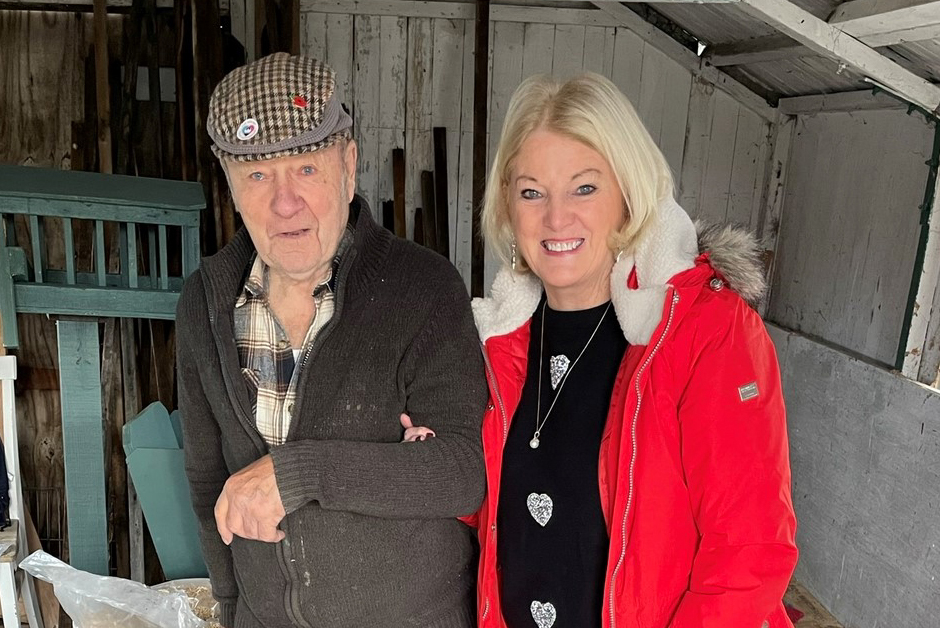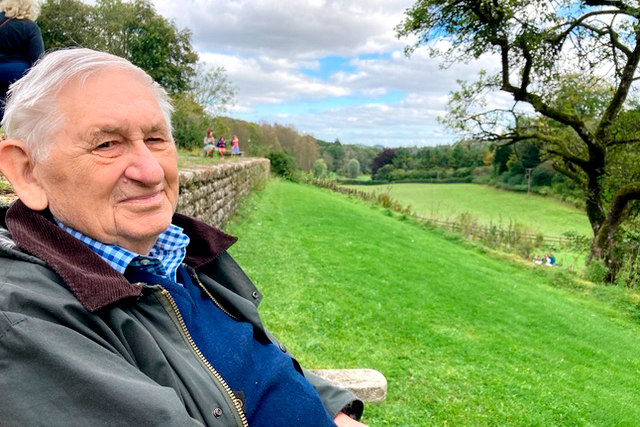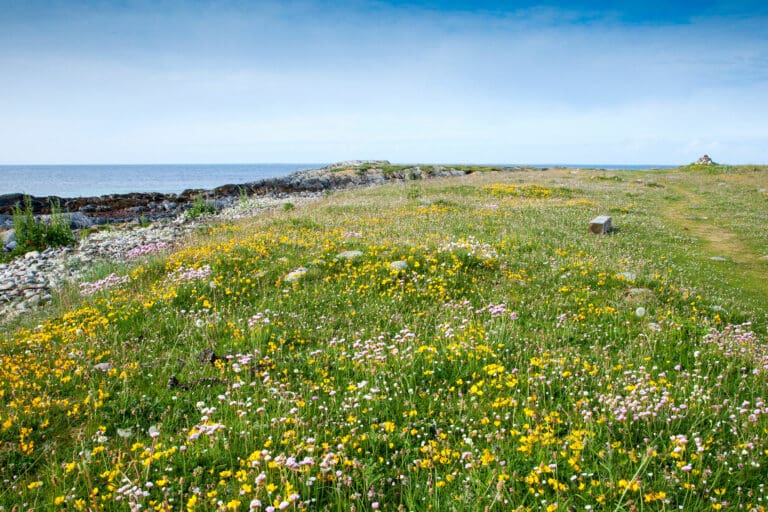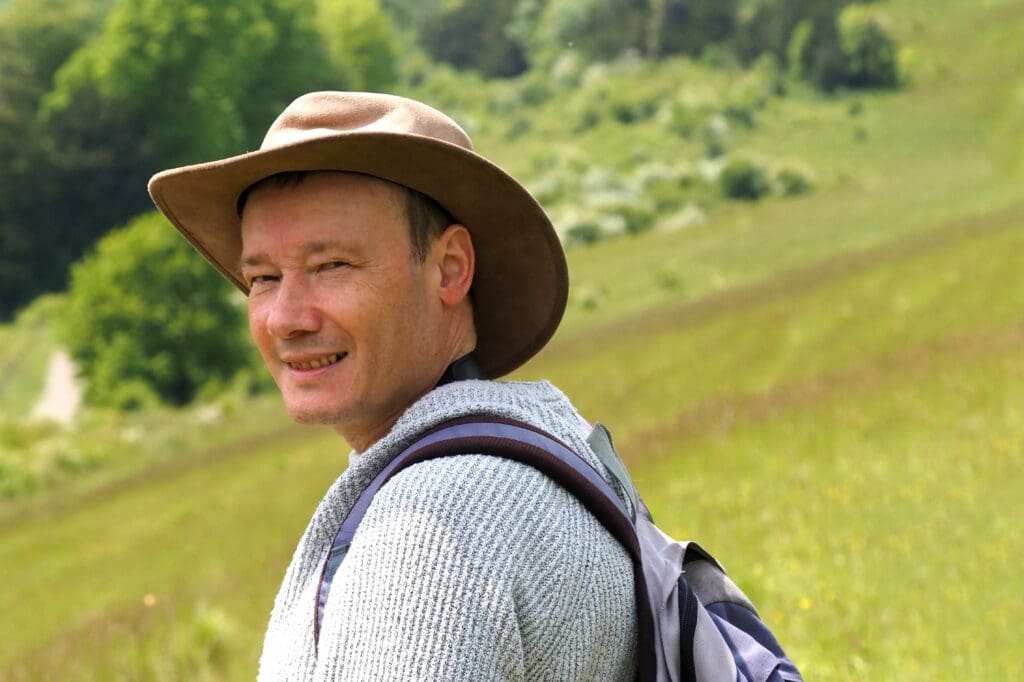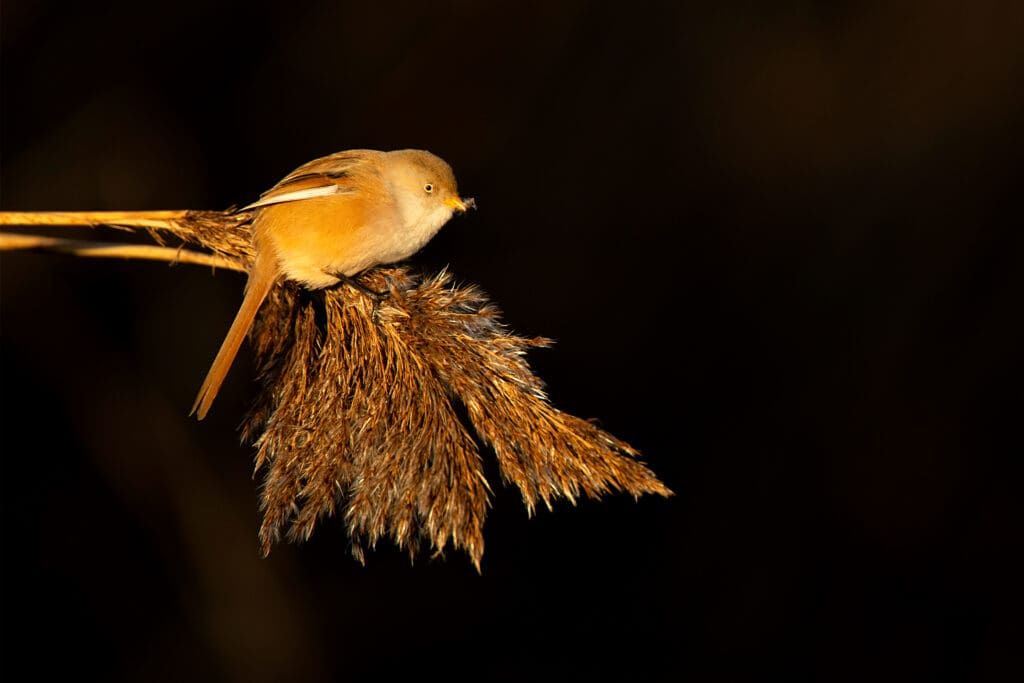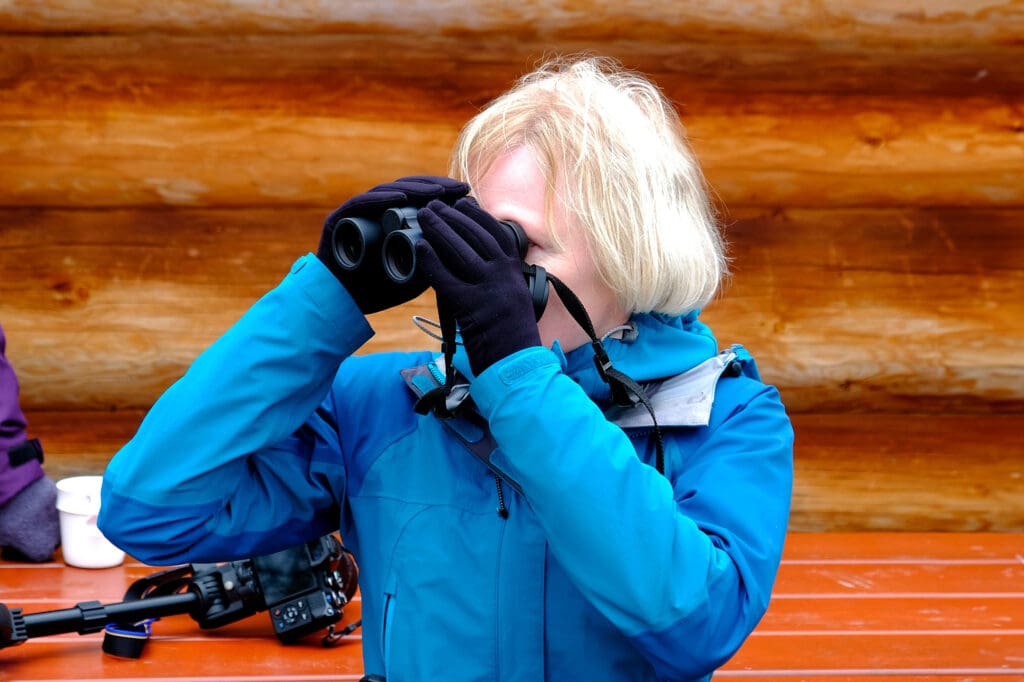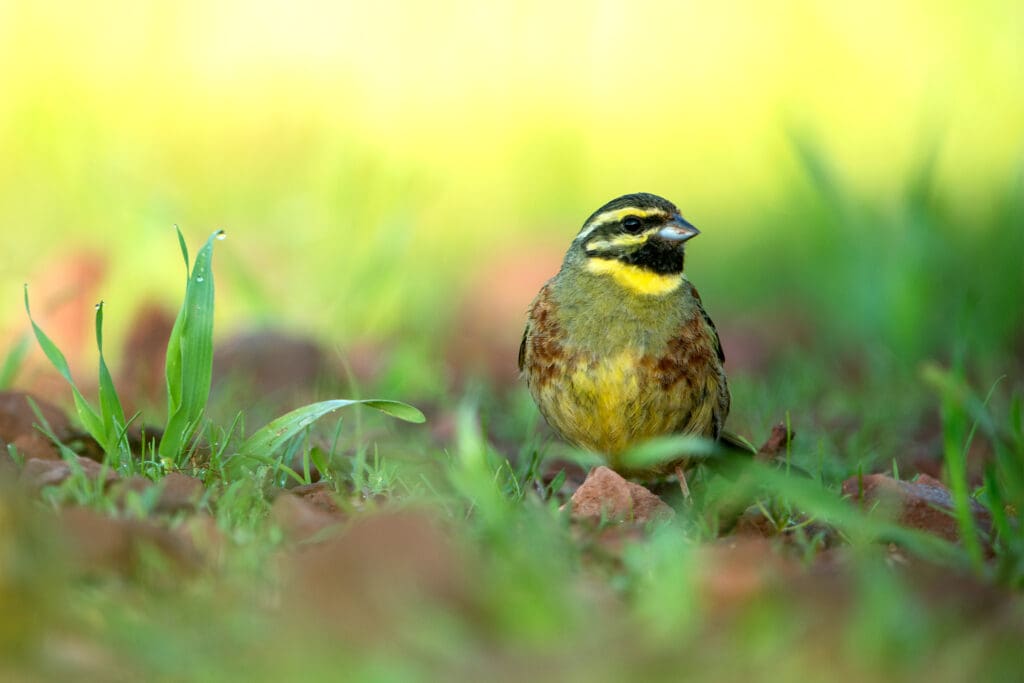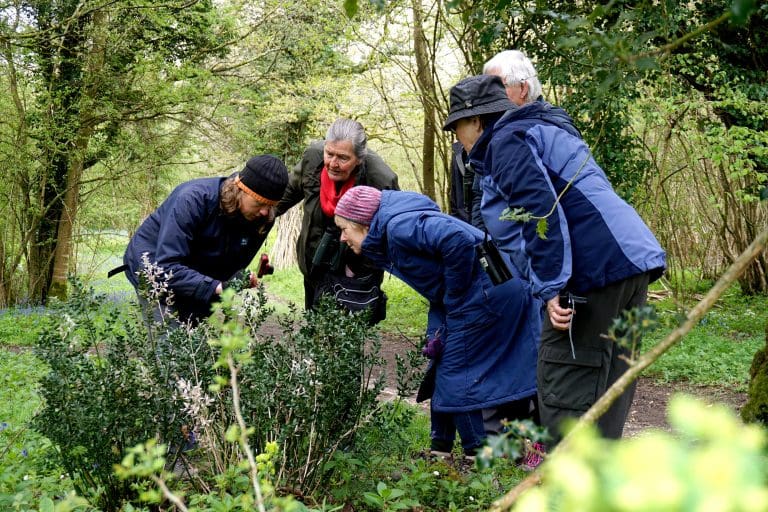The RSPB Magazine post box, and in more recent years, email inbox, has always been a pleasure to work on. It’s a treasure trove of ideas, observations and memories from keen and curious RSPB members.
Many of these members have been dedicated supporters for years, signing up in the 60s, 70s and 80s. And one has been with us since 1946: John Burton featured in Nature’s Home magazine in 2021 after an incredible 75 years of membership. Two years on, he’s now 92 and still a devoted supporter of the RSPB’s conservation work.
A recent letter from another long-term member, Nigel Palk, inspired me to find out more about some of the people who have been contributing to the RSPB for decades. Nigel signed up 60 years ago, and still treasures his copies of Bird Notes, an early predecessor to The RSPB Magazine. He’s helped to fund our work in the Flow Country and Hope Farm and follows the progress at both locations with great interest.
‘Stan Kitchiner was enthralled when a Kingfisher landed on the tip of his fishing rod’
I wanted to find out what it is that’s kept people like John and Nigel involved for decades. So I asked, via our Notes on Nature email, and by approaching a number of RSPB members individually. It’s been wonderful to learn more about the deep connection that many members have with the RSPB.
Hooked on birds
Unsurprisingly, birds played a big part in many long-term members’ childhoods. Many were inspired by nature-loving parents or grandparents, who would point out birds, butterflies and trees during walks. And most were surrounded by birds, either at home, or when on holiday.
Malcolm Barrett says he became interested in birds at an early age, noting that Lapwings came first. The Leicestershire farm where Christine Davies grew up had Yellowhammers singing in the hedgerows, Swallows chattering in the barns and Tawny Owls calling at night.
Alexis Datta often holidayed in Scotland and always visited the Mull of Galloway to see the amazing seabird colonies. And for Stan Kitchiner, that moment of connection came when he was a teenager, enthralled when a Kingfisher landed on the tip of his fishing rod!
Joining the RSPB
Members wrote that they joined the RSPB because they wanted to protect the countryside and wildlife that they had enjoyed while growing up. They could see that the birds and the habitats they needed were under threat.
Bridget Seward, who joined in 1974, recalls that, “even at that time, when conservation was not in the headlines, landowners were restricting public access, hedges were ripped up to make larger fields and ancient trees and woods disappeared to make room for development.”
“Long-standing RSPB members,” jokes Christine Davies, are in fact those who “frequently stand for long periods observing birds!”
Andy Guilor’s favourite RSPB nature reserve is Arne in Dorset, which he says inspired him to join because “it saved the Dartford Warbler from extinction.” Andy lived in Dartford, Kent at the time: the town from which the tiny heathland bird gets its name.
There were other reasons for joining too. Access to the RSPB’s nature reserves, and getting to be part of a birding community were important to members. On RSPB local group coach trips and walks you stood (and still stand!) a good chance of learning, or seeing something new, with the help of more experienced birdwatchers. “Long-standing RSPB members,” jokes Christine Davies, are in fact those who “frequently stand for long periods observing birds!”
Some who joined for the birding stayed for the conservation. David Street says he signed up initially because he loved UK birdlife. He adds, “I now realise that my membership is in part a long-term investment in building the vital body of science to hand to the next generation of conservationists.”
On those nature reserve visits, there have been some magical moments. Members wrote about their encounters and volunteering work with Avocets, Bitterns, Cirl Buntings, Ospreys – all species which, without the work of a conservation charity with dedicated and passionate supporters, may not have been present to see in the UK in the 21st Century. As David Street says, “the last four decades have witnessed unparalleled declines, but how much worse would these have been without the RSPB and partner organisations?”
Some members have a preferred local RSPB reserve. David Pagett, whose weekly visits to RSPB Old Moor, South Yorkshire, have allowed him to see new species including Black-necked Grebe, Jack Snipe and Spoonbill, says, “I never get tired of visiting.”
David adds “I like the work RSPB have done at Old Moor. I have been visiting since it was run by Barnsley and my father worked at the Concentration Yard, a large coal collecting area accessed via Old Moor Lane – now our bird reserve.”
Derek Bone makes a weekly trip to RSPB Pulborough Brooks, West Sussex, where he’s seen “a lot of firsts – including Spoonbill, Great White Egret, White Stork and White-tailed Eagle.”

What a day!
Eleven special RSPB nature reserve moments, by our long-term members. From Balranald to Pulborough Brooks and from eagles to Badgers, read their favourite nature memories.
A special place
Others look forward to an annual trip to a favourite place. RSPB Minsmere in Suffolk features in many memories: it was the place to go if you wanted to see an Avocet, the bird that became the symbol of the RSPB. It was the first RSPB site John Woodruff came to, specifically to see this species. And Stephen Basford, who visits each year, says, “I remember the first time I saw an Avocet here, I felt like a real birdwatcher!”
Stephen also describes with pride finding a Common Scoter out on the waves from the Minsmere shoreline, and a dusk encounter with some of the site’s mammalian residents.
“One evening we were walking back to the car in the fading light when suddenly from the reed beds to the right of the path stepped a Red Deer doe and her calf.” Stephen continues, “We all just froze for what seemed like an eternity but in reality, was probably just moments.”
Brian Lang has been a member for over five decades. One of his most memorable reserve visits was to Minsmere around 20 years ago, when he first saw a Little Egret. “It had me completely baffled for quite a while,” recollects Brian, “as this was before they became a common sight in this country!”
Kevin Telford dreamed of travelling to “the almost mythical” Minsmere for years, eventually getting there in 1979. “I was astounded by the wealth of birdlife,” he says. It was the first RSPB reserve Alexis Datta visited: in 1980, the site was only open two days a week. Since then it’s evolved, says Colin Kemp, who calls it a “standout reserve”. Bruce Martin volunteered here.
‘We all just froze for what seemed like an eternity but in reality, was probably just moments’
Minsmere is the favourite for Keith Metcalf too, and for Peter Floyd, who says: “my most memorable visit was my second one, in June 1972, when I saw 88 different species in one day!”
Paul and Tricia Brooks write, “we still have a very fond spot for Minsmere which was our first visit and really what encouraged us to join up. We were very taken by the huge enthusiasm and pleasant attitude of all the staff and volunteers we met there.” Janet Stott also praises the site staff, who rescued and looked after her bag which she’d accidentally left behind.
Of course, Minsmere isn’t the only reserve that inspires members to make a special trip. Leighton Moss in Lancashire also gets a few mentions, for example. Jean Wardle says, “Leighton Moss is my favourite reserve; my first visit was in 1965, shortly after the RSPB had purchased it. I have had several memorable experiences there – Bearded Tits on Christmas Day, a Bittern flyover and Otters on another Christmas Day, young Water Voles mooching along the edges of the Causeway on a summer’s day, Swans fighting near Lower Hide, with geese gathering to watch.”
And Chris Baines describes “a real Attenborough moment” there: “I lived most of my life quite close to Leighton Moss on the edge of the Lake District and so this was the reserve where I did a lot of my early birdwatching. There are so many great memories of birds seen at this reserve, from Bearded Tits, to Marsh Harriers and Bitterns. I have a special memory of looking out from one of the hides only to be treated to an Osprey diving to catch a fish and then sitting on a nearby post to eat it.”
Susan Jenkinson observes that all RSPB nature reserves are “individual and special in their own right.”
Getting involved
As well as giving their support as members, many of our long-standing supporters have also been involved in RSPB conservation projects, volunteering, supporting campaigns or contributing to land purchases.
David Fieldsend, a member since 1973, says, “Although not part of any RSPB reserve, living in the village of Wembury, in South Devon, has allowed me to be actively involved in the organisation’s work to help protect and then expand the range of the Cirl Bunting.”
He continues, “I became involved with the early monitoring of the species and as head of the village school, developed a link with the RSPB’s education officer, so that the children could become involved in the project. It is such a pleasure to see that, with the help of landowners, the species is now thriving and beginning to expand its range away from the narrow coastal fringe of South Devon.” David adds, “My dream is that one day the birds will return to the Test Valley, in Hampshire, where I saw my very first Cirl Bunting back in the early 1960s!”
Judith Allen and Nigel Palk supported the campaign to buy Hope Farm: thanks to donors like them the RSPB has been pioneering and demonstrating nature-friendly farming here for over 20 years. And Bridget Seward and Robin Dredge both ran local Young Ornithologists’ Clubs: the YOC was the junior branch of the RSPB between 1965 and 2000.
Daphne Toll is among many members who have supported our campaigns and e-actions over the years, drawing her MP’s attention to topics like neonicotinoids.
Others help on RSPB nature reserves, with the running of RSPB local groups, or have volunteered as residential wardens. Roger Beck says that “being a (fairly active) member of an RSPB local group has actually given a sort of structure to my daily life, particularly during retirement. The first entries on my calendar each year are not family birthdays, but the events organised by our RSPB committee!”
It’s clear from their answers that members really value RSPB local groups, for many reasons.
‘The group is really an important social network for its members. I’m so glad I joined the RSPB and met them’
Meg Hardie, a member of the Potters Bar and Barnet local group, sums these up perfectly:
“I started attending talks and then some local visits and coach trips to Pulborough Brooks, Pagham Harbour, Rutland Water and many other reserves. Everyone was so helpful and friendly that when my children got older I started going on holidays with the group to places such as Portland, Norfolk, Somerset, Suffolk, Northumberland and Scotland.”
Meg continues, “We have been able to watch bird ringing and visit some out of the way places as a group with knowledgeable local guides. You get to know who is good at identifying those difficult birds you are not sure of, and who can differentiate bird songs. Many of the group know a lot about wildflowers, moths and fungi etc. The group is really an important social network for its members. I’m so glad I joined the RSPB and met them!”
In the 1980s, Graham Allen volunteered at Titchwell and the Ouse Washes. At Titchwell, he was involved in protecting an Avocet nest (one of the first outside Suffolk) as part of a 24-hour watch. On one occasion he was rewarded for his 6am shift with close views of a Blue-winged Teal!
Ann Widdows volunteered for 25 years gathering data for the Breeding Bird Survey (BBS), an annual report produced by the British Trust for Ornithology (BTO), Joint Nature Conservation Committee (JNCC) and the RSPB. Data for the most recently published BBS survey report was collected by a total of 2,738 skilled observers like Ann.
Sandra Taylor volunteered at the RSPB’s Darts Farm shop for 12 years. And Hilary Jordan recalls that during her tenure at Minsmere, she helped to clean up the volunteer chalet after a chip pan fire accident, and was thanked with a pint of cider. She also reports a challenging journey along a Leighton Moss reedbed creek in thigh waders, but overall seems to have enjoyed her experiences!
‘The RSPB is a shining example of how to manage our lives and our environment so that all living things can flourish’
The RSPB Big Garden Birdwatch, now approaching its 45th year, continues to be a high point of the year for many. Even if the birds don’t perform during the allotted hour!
Sharon Alldrick says, “every January I count the birds in my garden and despite often seeing some amazing birds over the years, I can sometimes count just three sparrows and a Blackbird when the weekend comes around. Despite this I do submit my results and look forward to seeing the collated data.”
Gathering data for specific sites and projects is another way that members get involved. Bruce Martin has taken part in WeBS (Wetland Bird Survey) counts in the east of England since 1975, when he was recruited by the RSPB’s senior research biologist James Cadbury. When he set up the counts at Ouse Fen with the reserve’s first warden Sofie Leadsom, it was Bruce who came up with the site’s name.
The best thing about being an RSPB member
Steve Clarke says, “What I love about being a member is having unlimited free access to some of the most spectacular wild places and birding experiences that the UK can offer.”
Anne Charvet is motivated by the urgency of the nature crisis. “Now that it’s clear that the natural world is under severe threat and so many species are in decline,” she says, “I’ve taken part in RSPB campaigns, including lobbying Parliament to bring in Marine Conservation legislation, and writing letters to try to stop damaging development, e.g. Sizewell C nuclear power station bordering on Minsmere.”
Anne adds, “to me the RSPB is a shining example of how to manage our lives and our environment so that all living things can flourish. We need everyone to join!”
For Judith Allen, “being an RSPB member helps me to feel part of a “positive movement” that is concerned about and lobbying for the natural environment.” Judith is pleased that the RSPB now often works in partnership with other environmental charities.
Janet Stott agrees that the RSPB is doing great work “protecting and promoting birds for future generations”. She also remarks that “the cakes are good in the cafés” – another good reason to visit!
Bridget Seward says, “what I like most about being a RSPB member has been, and still is, watching the organisation’s growth and success through challenging times. When I joined, I believe the membership was around 120,000 and it is now 1.2 million.”
Bridget continues, “It has protected and restored wildlife habitats that without its intervention would have been lost. It has grown into an internationally respected and effective voice for birds and all wildlife. On our own we can do very little to preserve and restore wild places but by joining the RSPB we are part of a vitally needed voice for nature conservation.”
This theme of collective power is echoed by Nigel Palk, whose letter helped to inspire this article. He says, “If like myself 60 years ago, this is your first year of membership, remember that you are as important as every other member – past, present or future. You are one of a large army who care about our world. That is something to celebrate and smile about!”
I’d like to thank everyone who kindly took the time to send me their thoughts and memories. Not just for answering my questions but for their loyal support, the combined result of which means that the RSPB can manage over 200 nature reserves in the UK as well as boost international efforts to save species. It also means that the RSPB can run bird and nature conservation projects from beginning to end. From monitoring and investigating why a species is in decline and coming up with solutions, through fundraising to support a project, then running that programme of work, lobbying, liaising with other organisations and tracking results. None of this would happen without our members.
To end with, let’s hear from David Fieldsend, who joined in 1973.
“So why am I still a member after all these years? I suppose because the RSPB continues to do what attracted me to it in the first place. It fights for our birds and the wider natural environment, by both lobbying the decision makers, and at the same time working in so many practical ways to protect and develop our natural landscapes. I don’t see myself stopping my membership any time soon!”
We love to hear from RSPB members and would be very interested to hear your own experiences of the UK’s changing birdlife over the past few decades. Brian Lang mentions the spread of Little Egrets above. What have you witnessed arriving – and disappearing? Email us at rspbmagazine@rspb.org.uk

Find your nearest RSPB Local Group
Connect with wildlife, make new friends, and help us in the fight to save nature at one of our local groups.
You might also like
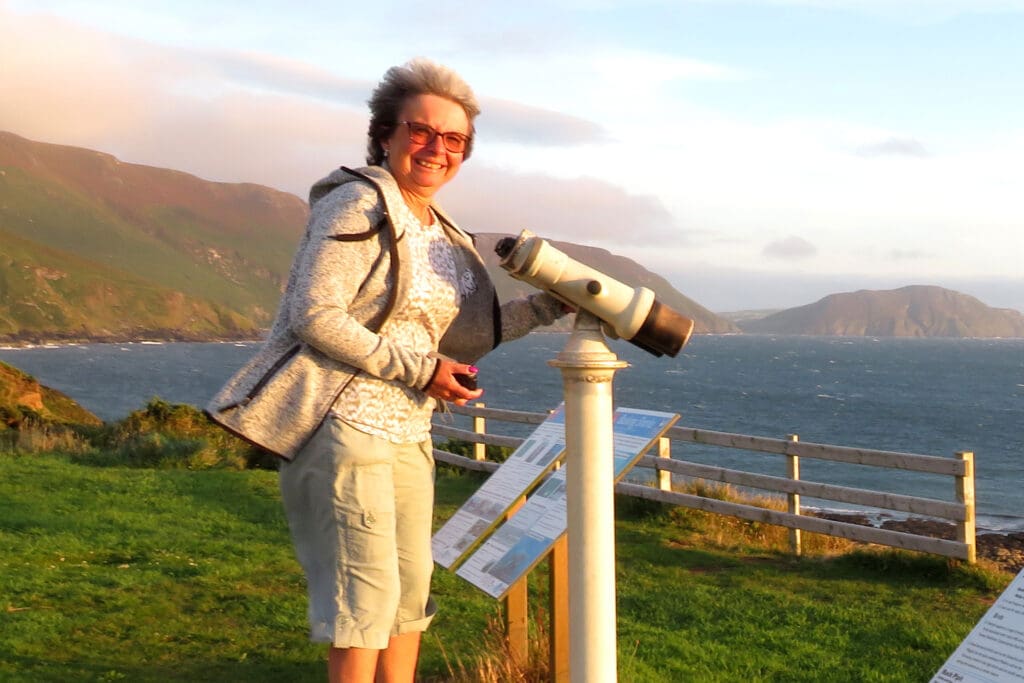
What a day!
